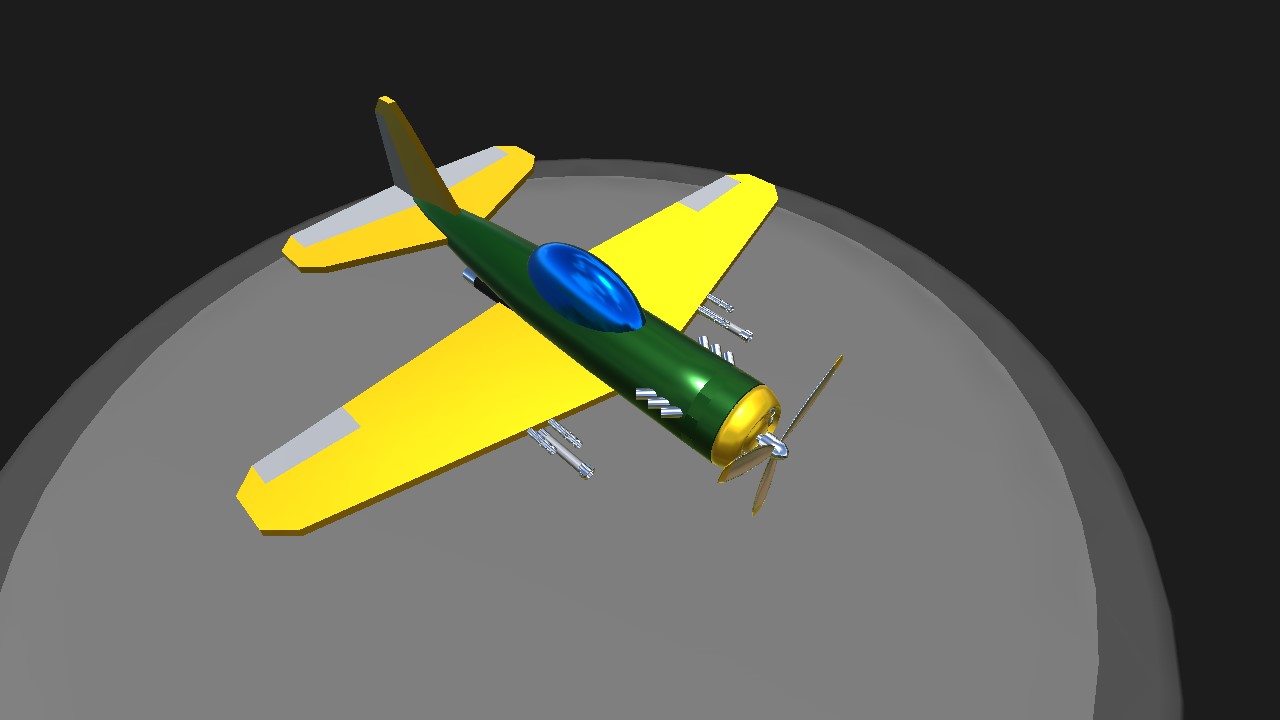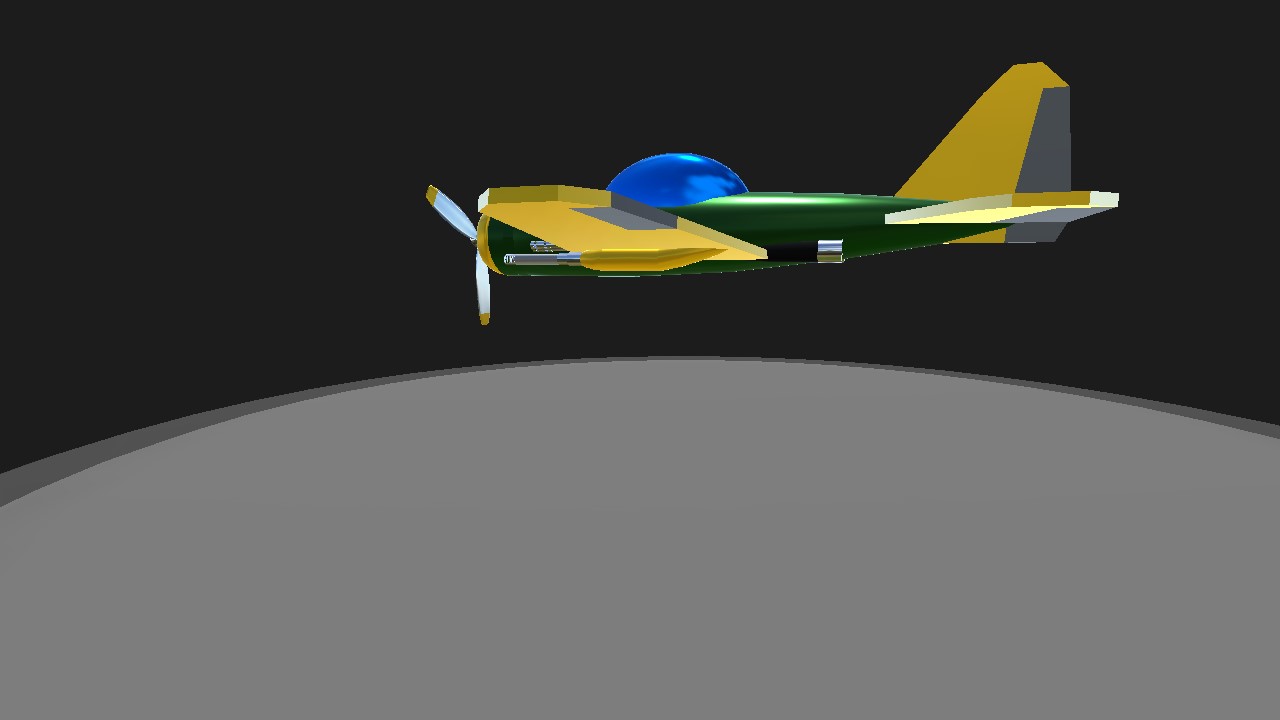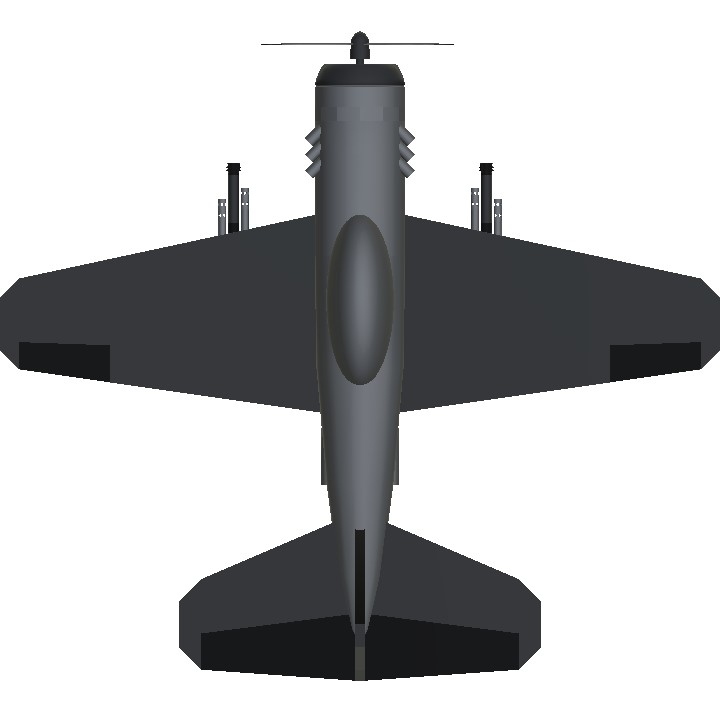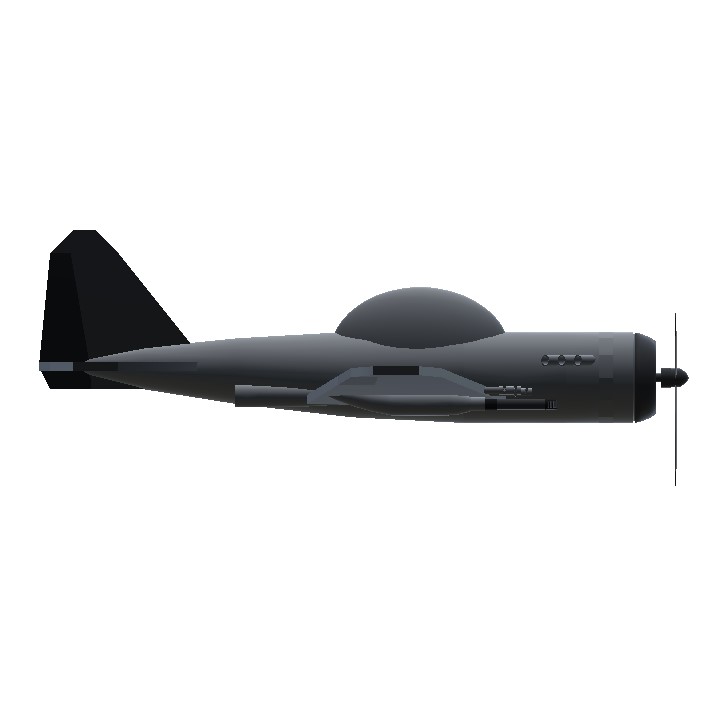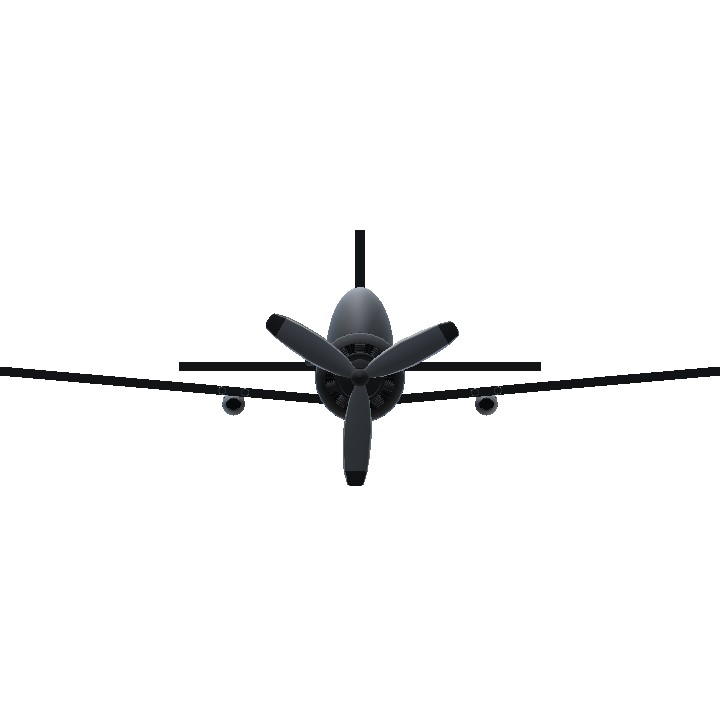The ME-238-A5 "Kanone Meister" was a Nazi German cheap aircraft project devised to replace other, obsolete aircraft like the Kanonvogel to help the war effort in 1947. It was a multirole aircraft, capable of performing bombing mission without bombs due to the usage of 2 50mm cannons, one on each wing (100mm cannons in game just for proportion sake), alongside 4 20mm cannons, 2 on each wing, to dogfight aigainst other aircraft and to destroy lighter armoured vehicles. It features a 2500HP Twin Turbo V12 Engine, powering this plane to around 700Kph IAS on level flight at sea level. Wierdly enough, this aircraft only has 8 exaust pipes, 6 on the fuselage that covers the engine and 2 behind the main wings.
Development: With WW2 going on well into 1947 and with Germany's resources being used in high quality aircraft and tanks that could not be as mass produced as its rival nations, a cheap aircraft that could replace others wpuld need to be used. Through 1946, some engineers already had these ideas, but they never got accepted, until 1947. The program for the Kanone Meister was born in 27/05/1947 (DD/MM/YYYY), and Messerschimdt already started working on the plane. The first functioning model took flight in 12/11/1947 (DD/MM/YYYY), with a Focke-Wulf engine and no weapons, but it already looked promising. In 09/12/1947 (DD/MM/YYYY), production had started, now with parts taylor made for this new aircraft. It replaced many obsolete planes and went on to serve until the war's end
Controls: Standard plane controls.
AG1 to activate canon.
Fun Fact That No One Cares About: Made this plane yesterday, while listening to Donut Media's Podcast, Past Gas.
Specifications
General Characteristics
- Created On Android
- Wingspan 26.0ft (7.9m)
- Length 23.0ft (7.0m)
- Height 9.1ft (2.8m)
- Empty Weight 3,315lbs (1,503kg)
- Loaded Weight 5,275lbs (2,392kg)
Performance
- Horse Power/Weight Ratio 0.473
- Wing Loading 25.3lbs/ft2 (123.7kg/m2)
- Wing Area 208.2ft2 (19.3m2)
- Drag Points 1467
Parts
- Number of Parts 42
- Control Surfaces 6
- Performance Cost 172

